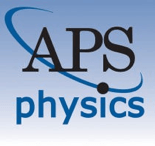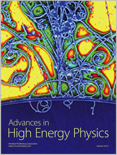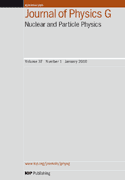
PHYSICS OF PARTICLES AND NUCLEI
Scope & Guideline
Connecting Researchers Through Innovative Insights
Introduction
Aims and Scopes
- Particle Physics:
Research exploring the fundamental particles of the universe, including quarks, leptons, and bosons, and their interactions as described by the Standard Model and beyond. - Nuclear Physics:
Studies on the structure and behavior of atomic nuclei, including nuclear reactions, decay processes, and the properties of nuclear matter. - Experimental Techniques:
Development and application of experimental methods for detecting and analyzing particle interactions, including advancements in detector technologies and data analysis. - Theoretical Models:
Formulation and investigation of theoretical frameworks, such as quantum field theories and statistical mechanics, to explain experimental observations and predict new phenomena. - Heavy-Ion Collisions:
Research into the behavior of matter under extreme conditions created in heavy-ion collisions, including studies of quark-gluon plasma and its properties. - Astrophysical Applications:
Exploration of connections between particle and nuclear physics with astrophysics, including studies of cosmic rays, neutrinos, and the early universe.
Trending and Emerging
- Quantum Computing Applications:
An increasing interest in the use of quantum computing for simulations and data analysis in particle physics, indicating a shift towards leveraging modern computational techniques to solve complex problems. - Machine Learning in Physics:
The application of machine learning and artificial intelligence techniques for data analysis, event reconstruction, and pattern recognition in experimental physics is gaining momentum. - Studies of Exotic Hadrons:
Research into exotic hadrons, including hybrid states and multiquark configurations, is becoming more prominent as the understanding of strong interactions deepens. - Neutrino Physics:
There is a growing focus on neutrino studies, including their mass, oscillations, and interactions, reflecting their importance in both particle physics and cosmology. - Quantum Field Theories Beyond the Standard Model:
Theoretical investigations into extensions of the Standard Model, including supersymmetry and dark matter candidates, are increasingly featured, highlighting the quest for new physics. - High-Energy Heavy-Ion Physics:
Research on heavy-ion collisions at high energy levels continues to expand, particularly studies related to the properties of the quark-gluon plasma and its implications for understanding the early universe.
Declining or Waning
- Traditional Nuclear Models:
The reliance on older, classical nuclear models has decreased as newer, more complex models and simulations that incorporate quantum mechanical effects gain traction. - Low-Energy Particle Scattering:
Research in low-energy scattering processes has become less frequent as the field moves towards high-energy physics and more complex interactions that provide deeper insights into fundamental physics. - Conventional Detector Technologies:
There is a noticeable decline in studies focused solely on traditional detector technologies as the field increasingly embraces novel detection methods and advanced computational techniques. - Static Models of Nuclear Matter:
The use of static models to describe nuclear matter is waning in favor of dynamic models that account for time-dependent processes and interactions in heavy-ion collisions. - Purely Theoretical Approaches:
The trend is moving away from isolated theoretical studies without experimental validation, as the integration of theory with experimental results is becoming more essential.
Similar Journals

Physics of Particles and Nuclei Letters
Connecting Theory with Practical Applications in PhysicsPhysics of Particles and Nuclei Letters, published by PLEIADES PUBLISHING INC, serves as a pivotal platform for the dissemination of cutting-edge research in the domains of particle and nuclear physics. With an ISSN of 1547-4771 and an E-ISSN of 1531-8567, this journal has been actively contributing to the scientific community since its inception in 2006 and continues to be influential, with a convergence period extending to 2024. While its open access options are limited, the journal is recognized for its rigorous peer-review process and commitment to quality, as reflected in its Scopus rankings across multiple categories, including a Q3 in Nuclear and High Energy Physics and Radiation in 2023. The journal is positioned to be a vital resource for researchers aiming to bridge theoretical understanding with practical applications in these highly specialized fields, fostering advances that resonate within atomic and molecular physics, radiology, and beyond. Its relevance continues to grow as the global scientific community seeks innovative solutions to complex problems in modern physics.

PHYSICAL REVIEW D
Exploring the Depths of Quantum Field TheoryPHYSICAL REVIEW D, published by the American Physical Society, is a premier journal dedicated to the rapid dissemination of significant research findings in the fields of Nuclear and High Energy Physics as well as Physics and Astronomy. With an impressive Impact Factor and a prestigious Q1 ranking in 2023, it stands as one of the leading journals in its domain, with a Scopus ranking of #6 out of 87 in its category, placing it in the 93rd percentile. The journal welcomes rigorous theoretical and experimental studies that advance understandings in particle physics, cosmology, and quantum field theory. Although it does not provide open access, researchers gain a significant platform to reach a global audience and contribute to the ongoing discourse within the scientific community. Published regularly since its convergence starting in 1989, it remains essential for both emerging and established scholars looking to stay at the forefront of high-energy and nuclear physics research.

Romanian Journal of Physics
Illuminating discoveries in physics since 2008.Welcome to the Romanian Journal of Physics, a distinguished platform dedicated to advancing the field of physics and astronomy since its inception. Published by EDITURA ACAD ROMANE, this journal plays a pivotal role in disseminating high-quality research from Romania and around the globe, with an impressive impact factor that reflects its rigorous academic standards. With a focus on a broad range of topics in general physics and astronomy, it proudly maintains a Q2 ranking in its category for 2023, positioning itself among the top journals in the field. The journal, which has been converging valuable research contributions from 2008 until 2024, is accessible to a wide audience of researchers, professionals, and students interested in the latest developments and discoveries in physics. While it operates under a traditional publication model without Open Access, its commitment to quality research ensures that the contributions featured in its pages resonate well within the scientific community. We invite you to explore the rich findings published in the Romanian Journal of Physics and to engage with the vital discussions shaping the future of physics.

PHYSICS OF ATOMIC NUCLEI
Fostering Knowledge in Atomic and Molecular RealmsPHYSICS OF ATOMIC NUCLEI is a distinguished journal dedicated to advancing the understanding of nuclear and particle physics, published by PLEIADES PUBLISHING INC. With its ISSN 1063-7788 and E-ISSN 1562-692X, this journal serves as a vital resource for researchers, professionals, and students in the fields of atomic and molecular physics, as well as high-energy physics. The journal has been actively contributing to the scientific community since its inception in 1996 and continues to publish valuable findings through 2024. Despite its current standing in the Q4 category for both Atomic and Molecular Physics, and Nuclear and High Energy Physics, there is an abundance of potential for growth and impact in these disciplines, as evidenced by its placement in the Scopus rankings. While the journal does not currently offer open access, it remains committed to disseminating quality research that informs and engages the scientific community. Explore PHYSICS OF ATOMIC NUCLEI to stay at the forefront of nuclear physics research and contribute to the dialogue in this critical area of study.

Advances in High Energy Physics
Illuminating the Path of High Energy Physics InnovationAdvances in High Energy Physics, published by HINDAWI LTD, is a premier open-access journal dedicated to the progressive field of Nuclear and High Energy Physics. With an ISSN of 1687-7357 and an E-ISSN of 1687-7365, this journal has been at the forefront of scientific discourse in high energy physics since its inception in 2007. The journal is notable for its impact within the community, currently holding a Q2 ranking in 2023 and positioned at #36 out of 87 in its category according to Scopus, highlighting its significant contribution to ongoing research and advancement in the field. Its accessible nature enables researchers, professionals, and students to engage with cutting-edge findings that shape our understanding of the universe. Spanning publications from 2010 through 2024, Advances in High Energy Physics serves as an invaluable resource for those looking to stay informed about the latest developments and methodologies in high energy physics across the globe.

EUROPEAN PHYSICAL JOURNAL A
Pioneering High Energy Physics Research and CollaborationEUROPEAN PHYSICAL JOURNAL A (EPJ A), published by Springer, is a premier journal in the field of Nuclear and High Energy Physics, dedicated to fostering innovative research and scholarly communication within the scientific community. With an impressive impact factor that reflects its significant contribution to the discipline, EPJ A ranks in the Q1 category and boasts a Scopus rank of 24 out of 87, placing it in the 72nd percentile of its field for 2023. This journal, with its ISSN 1434-6001 and E-ISSN 1434-601X, embraces a commitment to open access, ensuring that cutting-edge research is accessible to a global audience. With coverage from 1998 to 2024, EPJ A continues to be a vital resource for researchers, professionals, and students alike, promoting collaboration, knowledge sharing, and advancements in the vast landscape of nuclear physics and high-energy interactions. Located in Germany with a representative address in New York City, this journal serves as a bridge for international scientific discourse.

JOURNAL OF PHYSICS G-NUCLEAR AND PARTICLE PHYSICS
Unveiling the Mysteries of the Subatomic WorldJOURNAL OF PHYSICS G-NUCLEAR AND PARTICLE PHYSICS, published by IOP Publishing Ltd, stands as a premier journal in the realm of Nuclear and High Energy Physics. With an established presence since 1989 and currently converging toward 2024, this influential journal emphasizes groundbreaking research and discoveries in particle physics, fostering the dissemination of knowledge among a global audience of researchers, professionals, and students. Recognized for its high-quality publications, it holds a Q1 ranking in its category for 2023, placing it at an impressive 87th percentile among 87 journals in its field as per Scopus Rankings. The journal's impact is reflected in its esteemed reputation, making it an essential resource for advancing the frontiers of physics. Although it currently does not operate under an open access model, the journal ensures that subscribers receive comprehensive insights into the latest developments and theoretical advances that shape our understanding of the universe.

EUROPEAN PHYSICAL JOURNAL C
Exploring the Depths of Quantum Field TheoryEUROPEAN PHYSICAL JOURNAL C (EPJ C), published by SPRINGER, stands as a premier platform for innovative research in the domains of Physics and Engineering. With its Open Access policy established in 2014, EPJ C ensures that groundbreaking findings are readily available to the global scientific community, enhancing accessibility and collaboration. The journal, indexed in prestigious databases, boasts an impressive impact factor and ranks within the Q1 category for both Engineering and Physics and Astronomy, placing it among the top-tier journals in these fields. Celebrated for its rigorous peer-review process, EPJ C offers a wide-ranging scope encompassing various topics in particle physics, quantum field theory, and related interdisciplinary studies. Its consistent publication since 1991 has fostered a vibrant community of researchers dedicated to advancing knowledge and innovation in physics and engineering. Join the scholarly discussion and contribute to the cutting-edge research made possible through EPJ C's esteemed platform.

RIVISTA DEL NUOVO CIMENTO
Exploring New Horizons in Scientific Research.RIVISTA DEL NUOVO CIMENTO, published by SPRINGERNATURE, is a prestigious journal dedicated to advancing research in the field of physics and astronomy. Established in 1969, this journal has consistently delivered high-quality, peer-reviewed articles that explore emerging topics and significant developments in the broad scope of general physics. With an impressive Q1 ranking in the 2023 category for Physics and Astronomy and a remarkable Rank #23/243 in Scopus, it is recognized as a leading resource, standing in the 90th percentile of its field. Although not an open-access journal, RIVISTA DEL NUOVO CIMENTO ensures wide dissemination of its impactful content, making it essential reading for researchers, professionals, and students who are eager to stay ahead in their academic pursuits. Join a vibrant community dedicated to excellence and innovation in physics and astronomy by exploring the cutting-edge works published in this esteemed journal.

Radiation Detection Technology and Methods
Empowering Knowledge in Radiation Detection MethodsRadiation Detection Technology and Methods is a prominent academic journal published by Springer Singapore Pte Ltd, dedicated to advancing the field of nuclear and high-energy physics, as well as nuclear energy and engineering. Established in 2017, this journal provides a platform for the dissemination of pioneering research and innovative methodologies in radiation detection technology. As of 2023, it holds a commendable Q2 ranking in both the categories of Nuclear and High Energy Physics and Nuclear Energy and Engineering, underscoring its significance in fostering scholarly discourse within these vital fields. With ISSN 2509-9930 and E-ISSN 2509-9949, the journal aims to cater to a diverse audience of researchers, professionals, and students, emphasizing open access to knowledge. The journal's contributions are particularly crucial for those engaged in the development of safer and more efficient radiation detection techniques, ultimately bridging the gap between theory and practical applications in energy security and health physics. For researchers seeking a dedicated outlet for their work, Radiation Detection Technology and Methods represents an invaluable resource and an opportunity to influence the future of radiation science.